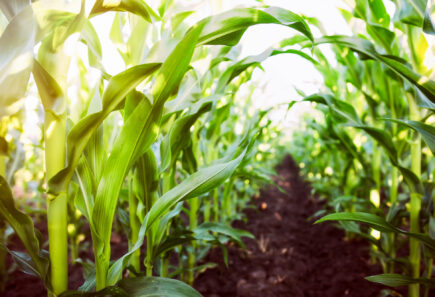
Alt proteins are a global climate solution
Today, agriculture accounts for a third of all global emissions. Animal agriculture alone – including the crops and pastures to feed those animals—accounts for up to 20 percent of all emissions. A solution? Change how meat is made. Alternative proteins—meat made from plants or cultivated from animal cells—deliver the same foods we love with a bonus: They slash emissions by up to 92 percent, offering a serious, scalable path forward for meeting the world’s climate goals.
Explore our latest factsheet
We cover the environmental benefits of alt proteins and offer a comparative lifecycle assessment.
Global demand for meat is set to increase by at least 50 percent by 2050
Our current meat production system significantly drives global greenhouse gas emissions. Plant-based and cultivated meat are a critical climate solution for satisfying the growing demand for meat with a fraction of the emissions of industrial animal agriculture.
It will be both scientifically and mathematically impossible for governments to meet obligations under the Paris Climate Agreement to decarbonize the global economy unless the amount of meat produced via conventional animal agriculture goes down. As the milestone year of 2030 nears, significant and rapid reductions in emissions across all sectors are needed to keep global warming below the 1.5℃ threshold.
Alternative proteins are a crucial aspect of how we will meet this need while also meeting growing global demand. Compared with conventional meat, plant-based meat causes up to 98% less emissions, and cultivated meat could cause up to 92% less. Like eliminating fossil fuels and combustion engines, alternative meat-making methods require government support. Around the world, governments can lead the way by funding science, creating scientific innovation centers, and incentivizing private sector R&D and private sector manufacturing and infrastructure build-up focused on alternative meat production methods.
Alternative proteins are to agriculture as renewables are to energy—the future.

Page
Environmental benefits of alt proteins
How eco-friendly are plant-based and cultivated meats? Explore their climate impacts and resource requirements relative to conventional meat.
Alternative proteins 101
There are three main categories of alternative proteins: plant-based, fermentation-derived, and cultivated. Just as the goal with renewable energy and electric vehicles is to make them interchangeable with conventional energy and combustion-powered vehicles, so too are alternative proteins focused on winning in the marketplace.
- Plant-based meat looks, tastes, and cooks like conventional meat, but is made entirely from plants. It can cut emissions by as much as 98 percent and uses up to 96 percent less land than conventional meat.1-6
- Fermentation is a powerful, flexible process for using microorganisms to produce alternative proteins. Used in food production for millennia, fermentation offers several advantages that can further increase the efficiency of the alt protein sector as a whole.
- Cultivated meat is exactly the same as the beef, pork, chicken, and fish we eat today—but grown directly from animal cells, without antibiotics. It can cut emissions by 92 percent, and use up to 90 percent less land than conventional meat.7

Plant-based meat
This is your guide to plant-based meat. Explore our tools, resources, and expert analysis of this field, from science to policy and markets.

Cultivated meat
This is your guide to cultivated meat. Explore our tools, resources, and expert analysis of the cultivated meat industry.

Fermentation
This is your guide to precision fermentation and whole biomass fermentation for alt protein production. Find resources, tools, and expert industry analysis here.
Learn more about alt proteins as a climate solution
From in-depth, data-driven reports and events to media statements, white papers, and blogs, our experts make the case for alternative proteins as a scalable solution that can address climate change caused by global food production. To meet growing global demand, meat production is estimated to increase by more than 50 percent by 2050. If the world is to achieve its climate, global health, food security, and biodiversity goals, making meat differently via alternative proteins (plant-based and cultivated meat) will be as essential as the global transition to renewable energy.

Environmental impacts of alternative proteins
Explore the environmental advantages of alternative proteins in diversifying the global food supply. With minimal land and water use, lower GHG emissions, and reduced pollutants, investing in alternative proteins ensures…

A global protein transition is necessary to keep warming below 1.5°C
Learn why alternative protein innovation is crucial to meeting the Paris Agreement temperature target and how we can accelerate progress.

Agriculture is at a climate crossroads. Alternative proteins are a global solution.
Learn how GFI is advocating for the inclusion of alternative proteins as a climate solution in federal policy and bringing increased visibility to what governments around the world are doing…

IPCC: Plant-based and cultivated meat can play a critical role in halving global emissions by 2030
GFI calls for increased public funding for alternative proteins as the world’s top scientists recognize that agricultural innovation — specifically plant-based and cultivated meat — mitigates climate change, delivers co-benefits…

Climate benefits of accelerating global production of alternative seafood
This white paper explores how plant-based and cultivated seafood could fill the growing seafood supply gap while mitigating climate change.
Alternative proteins in the media
Our experts, insights, and resources are sought and featured in leading global and national media outlets, enabling us to grow public support and political will for alternative proteins as a climate solution.

Support our climate-focused work
Our work with scientists, businesses, and policymakers across the global food system is powered by philanthropy. Thanks to our donors, we are able to advance alternative proteins as a climate solution that is global, tractable, and high-impact.
References
Sources: 1. Khan, et al. (2019); 2. Heller, et al. (2018); 3. Kazer, et al. (2021); 4. Dettling, et al. (2016); 5. Saerens, et al. (2021); 6. Smetana, et al. (2021); 7. Sinke, et al. (2023).





